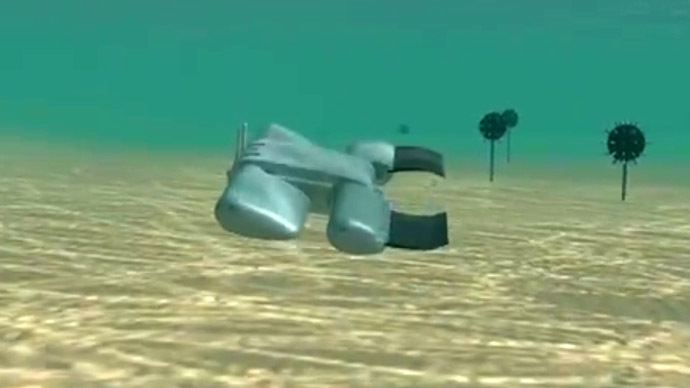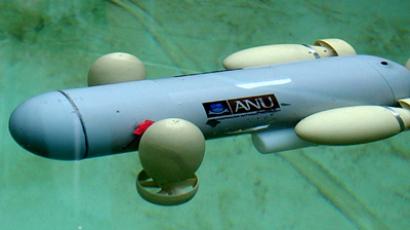Newest drone to fly, swim and drive during missions (VIDEO)

Move over, lightweight flying robots! The drone of the future is currently being developed at a government lab, and if all goes as planned it will do much more than just soar through the sky on its own.
While the United States continues to consider the merits behind its overseas weaponized drone program and efforts to allow surveillance unmanned aerial vehicles sail through domestic airspace, Sandia National Laboratories has released a video showing off a conceptual design meant to make the traditional UAV look like a thing of the past.
Sandia’s “Multi-Modal Vehicle Concept” is still being ironed out,
but ideally scientists hope that they’ll be able to soon deploy
an unmanned craft capable of flying, swimming, driving and even
hopping like a frog across any type of terrain or obstacle it may
encounter.
Independently, a number of autonomous and semi-autonomous
vehicles are already capable of seemingly everything under the
sun. If this latest endeavor works out accordingly, however,
Sandia will have its hands on a small vessel capable of
traversing air, land and water. That means a single drone could
be launched from a random station, soar through the sky on its
own only to land in a river, navigate to another location and
then pick itself up out of the water and walk to a site where it
could collect intelligence. After all, the types of drones
currently included in the American military’s arsenal involve
unmanned craft that can kill a target for thousands of feet away,
snoop on suspects using infrared cameras or sniff chemicals using
state-of-the-art sensors.
The laboratory says its Intelligent Systems, Robotics, & Cybernetics (ISRC) office has been slaving over a way to combine the different types of drones currently available in order to perfect this Multi-Modal Vehicle Concept, and they’ve already built and conducted testing on conceptual designed to try and hammer out the kinks needed to produce a fully functioning craft capable of doing more on its own than the average human.

“Imagine a mission where you have to covertly fly into an area, traverse through water, across land and overcome obstacles along the way,” Sandia says on its website. “ISRC has built and conducted limited testing on conceptual hardware, and while the concept may appear to be off in the distant future, our testing has shown that this concept could soon be a reality.”
“The real value added [of the Multi-Modal Vehicle] is that it allows maximum flexibility in highly complex missions without the concern over whether or not all of the vehicles are positioned just right,” Jon Salton, a Sandia engineer working on the project, told Wired.














